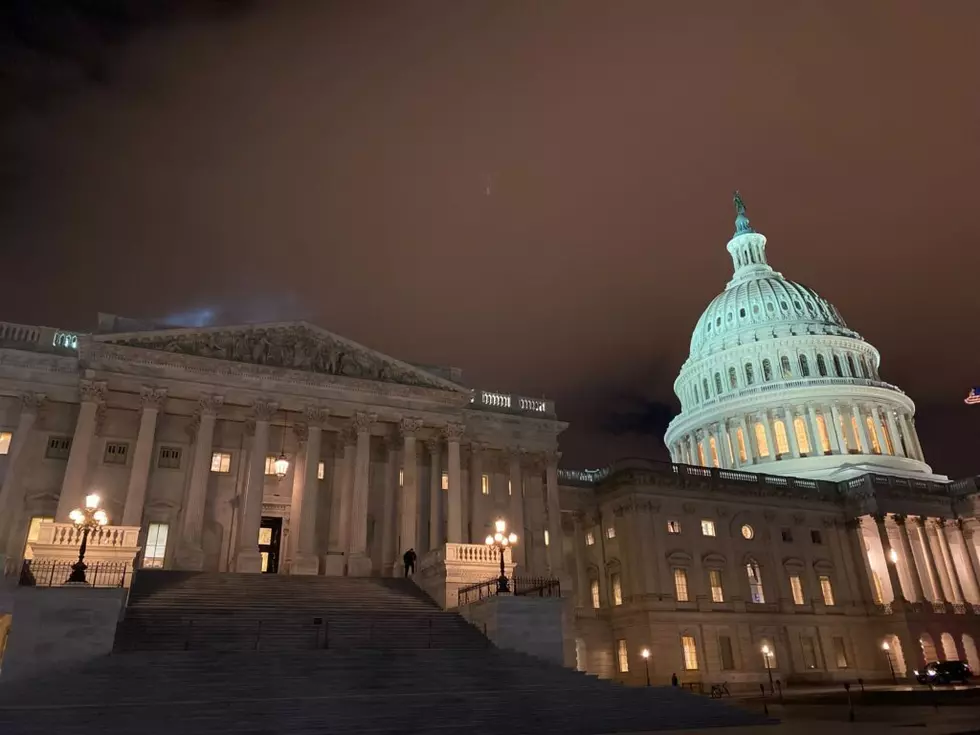
Shutdown threat fades, for now, as House passes budget stopgap
Benjamin Weiss
WASHINGTON (CN) — Congress appears to have once again averted a government shutdown with the House voting Thursday to pass a short-term budget patch that allows lawmakers to sidestep this week’s looming funding deadline.
The measure, which extends funding for some critical federal agencies through March 8 and other government programs through March 22, marks Congress’ fourth brush with fiscal disaster since the fall. A similar stopgap bill that averted a shutdown in January was slated to run out at midnight Friday.
This most recent spending patch also represents a compromise between House Speaker Mike Johnson and Democrats including House Minority Leader Hakeem Jeffries, Senate Majority Leader Chuck Schumer and President Biden. The party leaders agreed on a short-term funding extension Wednesday evening under the pretense that lawmakers would use the extra time to negotiate a tranche of full-year budget bills.
Democrats and Republicans have reportedly already reached consensus on six of the 12 individual 2024 spending bills.
The stopgap, known as a continuing resolution, cleared the House Thursday afternoon on a 320-99 vote.
Although the measure has Speaker Johnson’s support, House Republicans were split on the measure, with some of the GOP caucus’ more conservative members railing on their colleagues for what they framed as tacit support for the White House’s spending priorities.
Among those was Texas Representative Chip Roy, a key member of the conservative House Freedom Caucus, who blasted the spending plan as “buying more time to spend more money we don’t have.”
“We’re going to continue funding the government at [former House Speaker] Nancy Pelosi’s omnibus spending level,” Roy said, adding that the measure would “fund all the priorities we oppose” such as the Biden administration’s border security authority and the Internal Revenue Service.
Florida Representative Matt Gaetz quipped that “watching the House Republicans is like watching a football team whose best play is the punt and the block.”
“Last I checked, the Republicans actually have a majority in the House of Representatives, but you wouldn’t know it if you looked at our checkbook,” he said.
Kentucky Representative Thomas Massie joined the dogpile on his Republican colleagues. “When it comes to spending, there is a uniparty,” he said. “Republicans and Democrats have united to kick the can down the road.”
Despite that, other GOP lawmakers framed the stopgap as a necessary evil that would buy Congress the time it needs to work through the series of full-year funding bills.
“We knew finding ground would not be easy, but we’ve made progress,” said Texas Representative Kay Granger, who urged her colleagues to pass the continuing resolution. “We need a few more weeks to finish drafting the bills. In the meantime, we can’t afford a harmful government shutdown.”
At a news conference Thursday morning, Speaker Johnson defended himself against what some of his fellow Republicans have said was a lack of transparency in his negotiations with Democrats.
“The appropriations process is ugly,” he said. “Democracy is ugly.”
Johnson pointed out that he had worked to break what he called Washington’s “omnibus fever,” referring to the GOP’s push to abandon a longstanding congressional tradition of considering the entire federal budget in one bill as opposed to several individual measures.
The pro-stopgap Republicans were also joined by Democrats, such as Connecticut Representative Rosa DeLauro, who said on the House floor Thursday that a continuing resolution was not the ideal outcome but that lawmakers had little choice.
“At the time of passing our last continuing resolution, I had hoped that we would not need this measure,” said DeLauro, ranking member of the House Committee on Appropriations. “Now, we owe it to the American people in reaching the end of this process.”
The Connecticut Democrat said she appreciated the “respectful bipartisan process” behind the proposed stopgap budget and said the bill takes steps to “move us closer to the finish line.”
Now that it has cleared the House, the proposed continuing resolution heads up to the Senate, where it is expected to pass.
